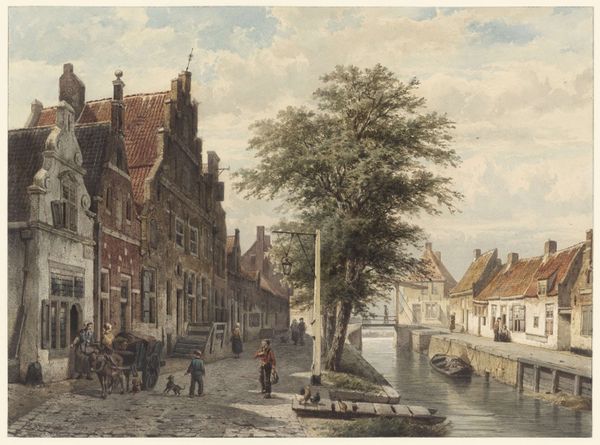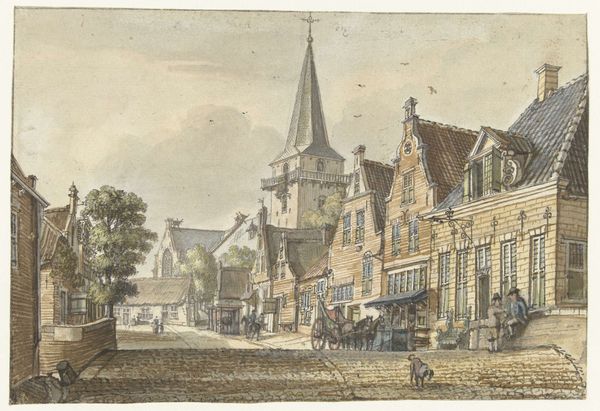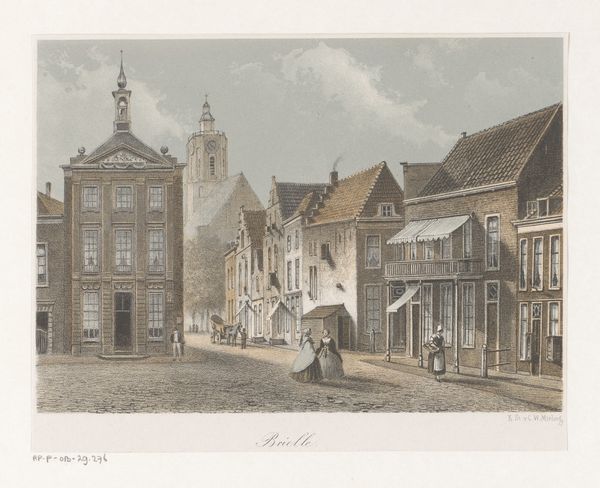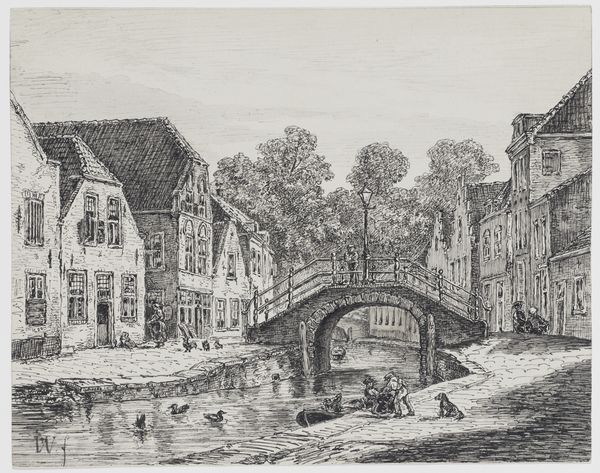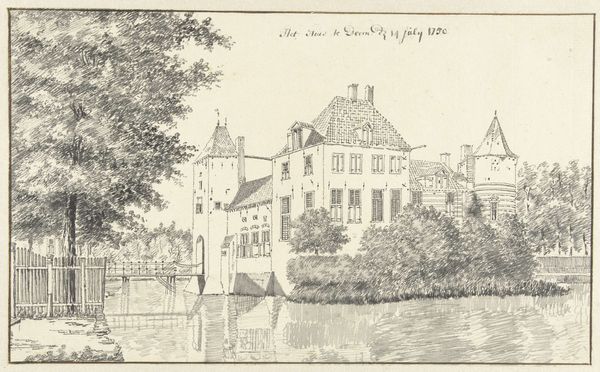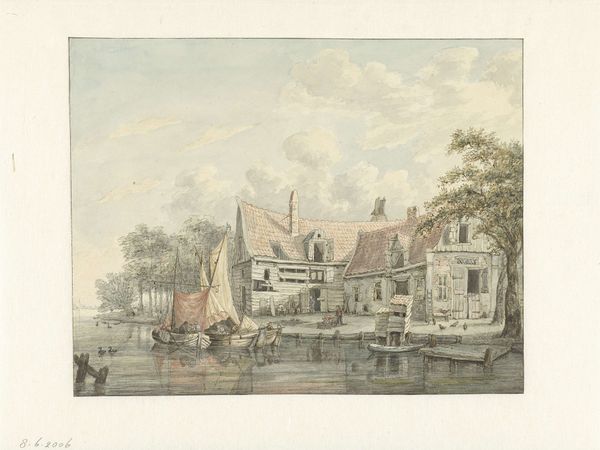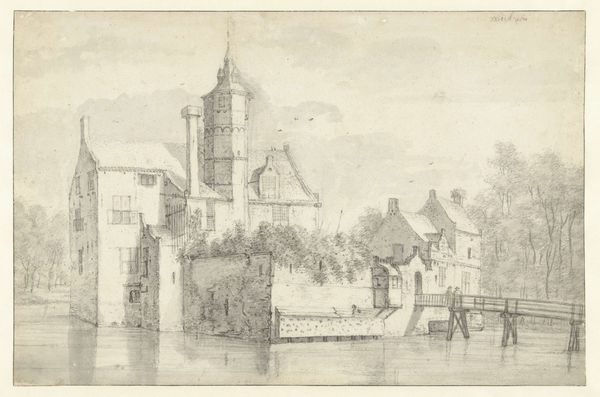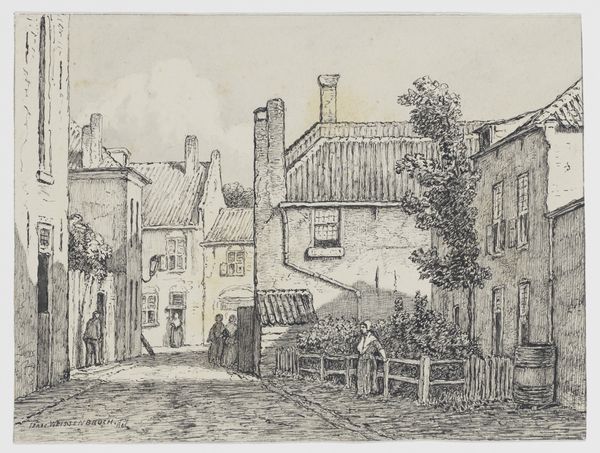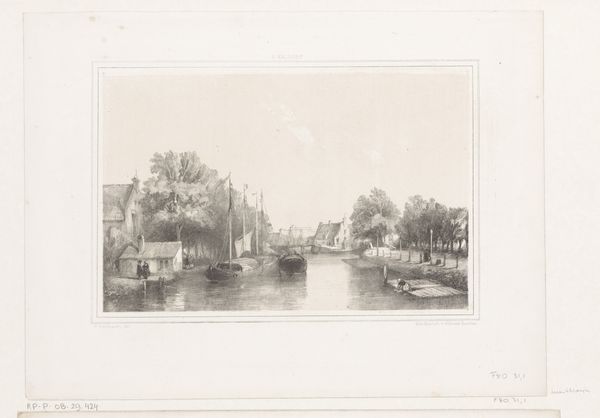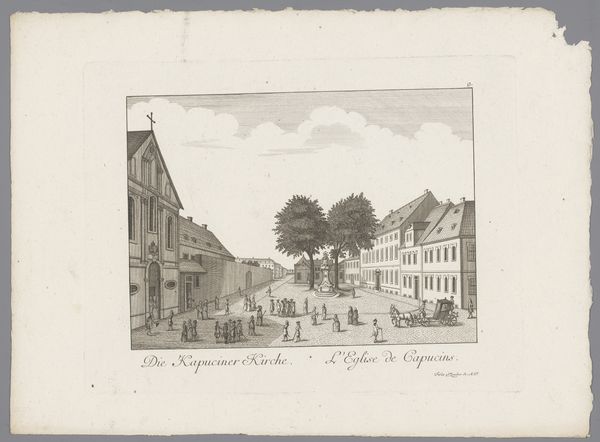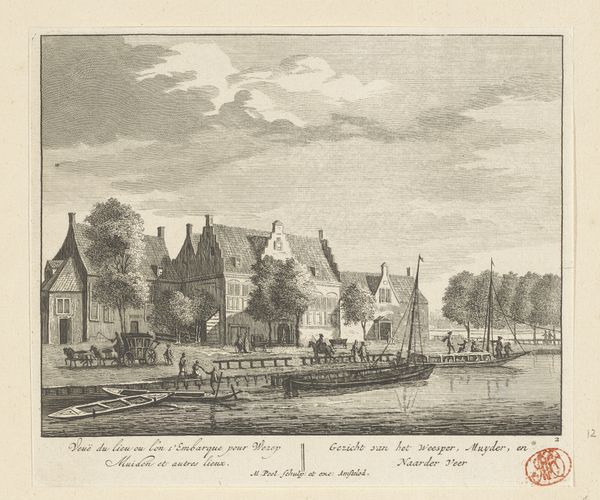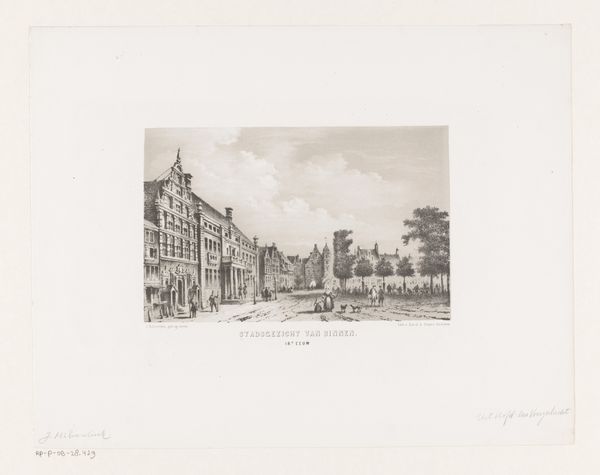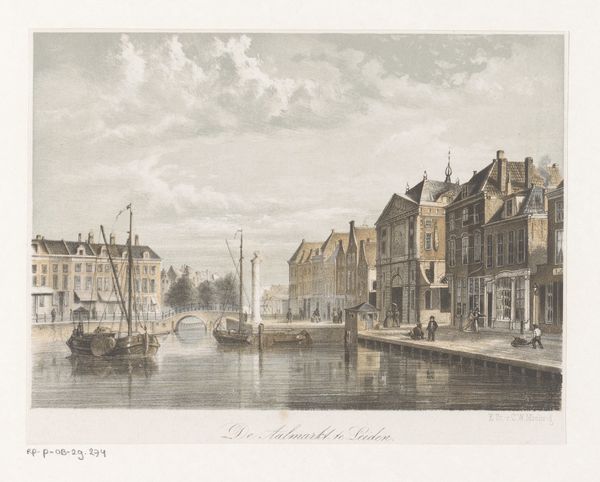
Dimensions: height 180 mm, width 233 mm
Copyright: Rijks Museum: Open Domain
Curator: Looking at this print entitled "Gezicht op Oudewater," dating back to 1863, a quaint little town comes to life. The location itself, Oudewater, speaks to the historical significance embedded in Dutch landscapes. It's housed in the Rijksmuseum. Editor: Immediately, I notice a tranquility about the image. It's peaceful, almost like a memory fading gently at the edges. The subdued tones, grays and soft browns, reinforce that feeling of nostalgic calm. It feels… wistful. Curator: Consider the medium; a print, likely produced for wider circulation. That in itself connects it to notions of accessibility, perhaps aimed at a growing middle class with an interest in representations of their country. Think of the labor involved, from the artist’s initial drawing to the printmaker's painstaking work! Editor: But the townscape itself—it resonates with iconic imagery of Dutch life, those canals and brick buildings, solid and enduring. It is almost symbolic for what the Dutch represent for themselves and to others, if you catch my drift. Look how those brick buildings seem to emerge straight out of the canal waters; I can’t help but wonder what stories these buildings hold! Curator: I agree there's that quintessential "Dutch-ness" to it, yes, but also the mundane. It is not a grand, monumental history. Consider the working-class elements of the image -- the woman at the embankment to wash linen, the boating merchant; the artist immortalizes these workers and everyday citizens for what they’re doing, producing something with their labor. Editor: Perhaps, or maybe there's something even more potent at play. The water's reflection blurs the distinction between the real and the reflected, mirroring reality. Curator: What strikes me is how the image invites reflection – not just of buildings on water, but also on changing social structures and economic realities that existed in that time! Editor: Absolutely, the print manages to encapsulate not just a place, but an era's aesthetic and cultural soul. It's fascinating how visual cues are embedded and still resonate. Curator: Agreed. There is an accessibility here that cannot be understated. Editor: Well, examining the work together truly makes these imprints from the past feel like tangible echoes in the present!
Comments
No comments
Be the first to comment and join the conversation on the ultimate creative platform.
